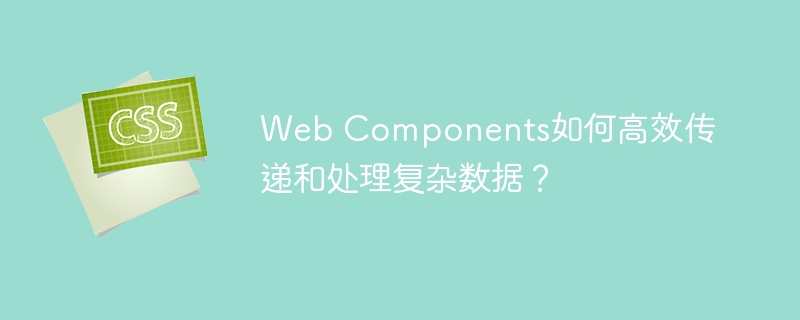
Web Components 复杂数据的高效传递与处理
本文探讨在 Web Components 中安全传递复杂数据(例如包含多个对象的数组)的最佳实践。 假设我们有一个 <order-tree></order-tree> 组件,需要接收如下复杂数据结构:
let data = [{id:1,name:'1'},{id:2,name:'2'},{id:1,name:'3'},...];直接将 JavaScript 对象作为属性传递并非理想方案,因为 Web Components 属性只能接收字符串。 因此,我们需要将数据序列化为字符串再传递。 JSON 字符串化是常用的方法。
在父组件中,我们将 data 对象转换为 JSON 字符串,然后赋值给 <order-tree></order-tree> 组件的 data 属性:
let data = [{id:1,name:'1'},{id:2,name:'2'},{id:1,name:'3'}];
let jsonString = JSON.stringify(data);
document.querySelector('order-tree').data = jsonString;在 <order-tree></order-tree> 组件内部,通过 this.data 获取 JSON 字符串,并使用 JSON.parse() 方法将其解析回 JavaScript 对象:
class OrderTree extends HTMLElement {
constructor() {
super();
this.attachShadow({ mode: 'open' });
}
connectedCallback() {
try {
let data = JSON.parse(this.data);
// 现在 data 是一个 JavaScript 对象,可以正常使用了
console.log(data);
// ... 使用 data ...
} catch (error) {
console.error('JSON 解析失败:', error);
// 处理 JSON 解析错误,例如显示错误信息或使用默认数据
}
}
get data() {
return this.getAttribute('data');
}
set data(value) {
this.setAttribute('data', value);
}
}
customElements.define('order-tree', OrderTree);此方法确保复杂数据安全有效地传递给 Web Components 并进行解析。 记住在组件内部添加错误处理机制,以应对 JSON.parse() 失败的情况,例如显示错误信息或使用默认数据。
以上就是Web Components如何高效传递和处理复杂数据?的详细内容,更多请关注php中文网其它相关文章!

每个人都需要一台速度更快、更稳定的 PC。随着时间的推移,垃圾文件、旧注册表数据和不必要的后台进程会占用资源并降低性能。幸运的是,许多工具可以让 Windows 保持平稳运行。

Copyright 2014-2025 https://www.php.cn/ All Rights Reserved | php.cn | 湘ICP备2023035733号